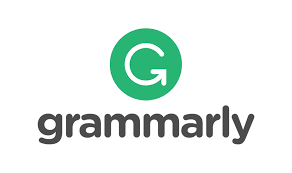Improving Students' Writing Skill in Writing Descriptive Text using Brainstorming Plus Webbing Techniques
DOI:
https://doi.org/10.57176/jn.v3i2.100Keywords:
writing, descriptive text, brainstorming technique, webbing techniqueAbstract
Improving students' writing skills is the most important thing in their academic journey, yet it often poses some difficulties. This research was aimed to explore into this critical area, specifically focusing on improving students' ability in writing descriptive text. Moreover, it seeks to determine the effectiveness of applying either one or two writing techniques in order to achieve this objective.The study was conducted among 25 students in the VIII H class at SMP Negeri 29 Semarang. To measure the impact of different writing techniques, pre-tests and post-tests were conducted as research instrument. The control group were instructed to utilize the brainstorming technique exclusively, while the experimental group were treated by receiving instruction using both brainstorming and webbing techniques. Upon analysis of the collected data, the results showed a significant difference in students' achievement in writing descriptive text between the two groups. Specifically, the t-test value was calculated of 8.47 meaning that it surpassed the critical t-table value of 2.069 at a 5%. This differences underscores the acceptance of the alternative hypothesis (Ha), indicating the efficiency of the brainstorming plus webbing techniques in developing some improvements in students' descriptive writing skills compared to just utilizing brainstorming alone. These findings hold deep implications for academical practices aimed at improving students' writing abilities. By explaining the effectiveness of utilizing multiple teaching strategies, this research not only contributes to the academic conversation on effective teaching techniques but also provides valuable insights for educators seeking to level up their teaching approaches for the benefit of their students' academic development.
_______________________________________________________________________________________
Meningkatkan kemampuan menulis siswa merupakan hal yang sangat penting dalam tahapan akademis mereka, namun sering kali merupakan tantangan yang signifikan. Dalam penelitian ini, kami berusaha untuk menelusuri ruang lingkup ini, dengan fokus khusus pada meningkatkan kemampuan siswa dalam membuat dan menyusun teks deskriptif. Selain itu, penelitian ini bertujuan untuk menentukan efektivitas dari penggunaan satu atau dua teknik menulis dalam mencapai tujuan ini. Studi ini dilakukan dengan mengajak 25 siswa yang terdaftar di kelas VIII H di SMP Negeri 29 Semarang. Untuk menilai dampak pendekatan pengajaran yang berbeda, pre-test dan post-test dijadikan sebagai alat untuk mengukur nilai kemampuan siswa selama penelitian berlangsung. Kelompok kontrol atau control group menjalani pembelajaran hanya dengan menggunakan teknik brainstorming saja, sementara kelompok eksperimen atau experimental group menerima pembelajaran yang menggunakan pengabungan dari teknik brainstorming dan webbing. Setelah menganalisis data yang terkumpul dari pre-test dan post-test, hasilnya menunjukkan bahwa terdapat perbedaan yang signifikan dalam pencapaian siswa dalam menulis teks deskripsi antara kedua kelompok. Temuan ini memiliki implikasi yang mendalam bagi praktik pengajaran yang bertujuan meningkatkan kemampuan menulis siswa. Dengan menjelaskan efektivitas penggunaan berbagai strategi pengajaran, penelitian ini tidak hanya memberikan kontribusi pada diskusi ilmiah tentang metodologi pengajaran yang efektif tetapi juga memberikan wawasan berharga bagi pendidik yang ingin mengoptimalkan pendekatan pengajaran mereka demi kemajuan akademis siswa mereka.
References
Anggraini, F. (2020). Brainstorming Technique In Teaching Writing Descriptive Text. Channing: Journal of English Language Education and Literature, 5(2), 71–74. https://doi.org/10.30599/channing.v5i2.840
Blanchard, K., & Root, C. (2003). Ready to Write: A first Composition Text (Third Edition) (Vol. 3). Pearson Education, inc.
Hasibuan, A., Tanjung, S., & Siregar, M. R. H. (2020). THE EFFECT OF USING WEBBING TECHNIQUE ON STUDENTS’ WRITING DESCRIPTIVE TEXT ABILITY. Jurnal Liner, 3(1), 68–85.
Hidayati, I. (2019). THE USE OF TOURISM BROCHURESIN TEACHING WRITTEN DESCRIPTIVE TEXT TO THE TENTH GRADE OF SMA N 1BAWANG-BATANG IN ACADEMIC YEAR 2019/2020. 118.
Hikmawati, L. I. (2022). The Use of Clustering Technique in Teaching Writing Descriptive Text: A Case of The Second Year Students at SMP N 10 Semarang in The Academic Year 2021/2022. 144.
Khakim, M. A. (2021). THE USE OF BRAINSTORMING TECHNIQUE TO IMPROVE THE STUDENTS’ ABILITY IN WRITING DESCRIPTIVE TEXT: A CASE OF THE EIGHT GRADE STUDENTS OF SMPN 1 SAYUNG DEMAK IN THE ACADEMIC YEAR 2018/2019. 81.
Nugraha, D., & Indihadi, D. (2019). Brainstorming in scientific writing in elementary school. Journal of Physics: Conference Series, 1318(1), 012026. https://doi.org/10.1088/1742-6596/1318/1/012026
Parwati, I., & Sugesti, I. (2023). Exploring EFL students’ strategies in writing research background at one of the universities in Cirebon. Allure Journal, 3(1), 38–47.
Rizky, M., Affini, L. N., & Karima, F. H. (2023). English Final Semester Assessment at Vocational High School in Semarang. Journal of English Language Learning, 7(1), 266–273.
Septiana, A. S., Karima, F. H., & Nusanti, P. (2023). Accounting Vocational Students’ Perception Towards the English Project in Curriculum Merdeka. Ideguru: Jurnal Karya Ilmiah Guru, 8(3), 687–694.
Utari, A. (2019). THE USE OF WEBBING TECHNIQUE TO IMPROVE RECOUNT TEXT WRITING SKILL OF TENTH GRADERS OF SMAN 1 CURUP SELATAN. Linguist, 5(1), 46–55.
Virdaus, V. V. (2019). The Improvement Of English Writing And Students’ Motivation Through Brainstorming. MOTORIC, 3(1), 15–25. https://doi.org/10.31090/m.v3i1.882
Yudaningrum, P. (2020). Improving Students’ Ability in Writing Descriptive Text by Using Webbing Technique. 1, 87–93.
Downloads
Published
How to Cite
Issue
Section
License
Copyright (c) 2024 Putu Aditya Dhananjaya, Festi Himatu Karima, Ngasbun Egar

This work is licensed under a Creative Commons Attribution-ShareAlike 4.0 International License.
You are free to:
- Share — copy and redistribute the material in any medium or format for any purpose, even commercially.
- Adapt — remix, transform, and build upon the material for any purpose, even commercially.
- The licensor cannot revoke these freedoms as long as you follow the license terms.
Under the following terms:
- Attribution — You must give appropriate credit , provide a link to the license, and indicate if changes were made . You may do so in any reasonable manner, but not in any way that suggests the licensor endorses you or your use.
- ShareAlike — If you remix, transform, or build upon the material, you must distribute your contributions under the same license as the original.
- No additional restrictions — You may not apply legal terms or technological measures that legally restrict others from doing anything the license permits.
Notices:
You do not have to comply with the license for elements of the material in the public domain or where your use is permitted by an applicable exception or limitation .
No warranties are given. The license may not give you all of the permissions necessary for your intended use. For example, other rights such as publicity, privacy, or moral rights may limit how you use the material.
















